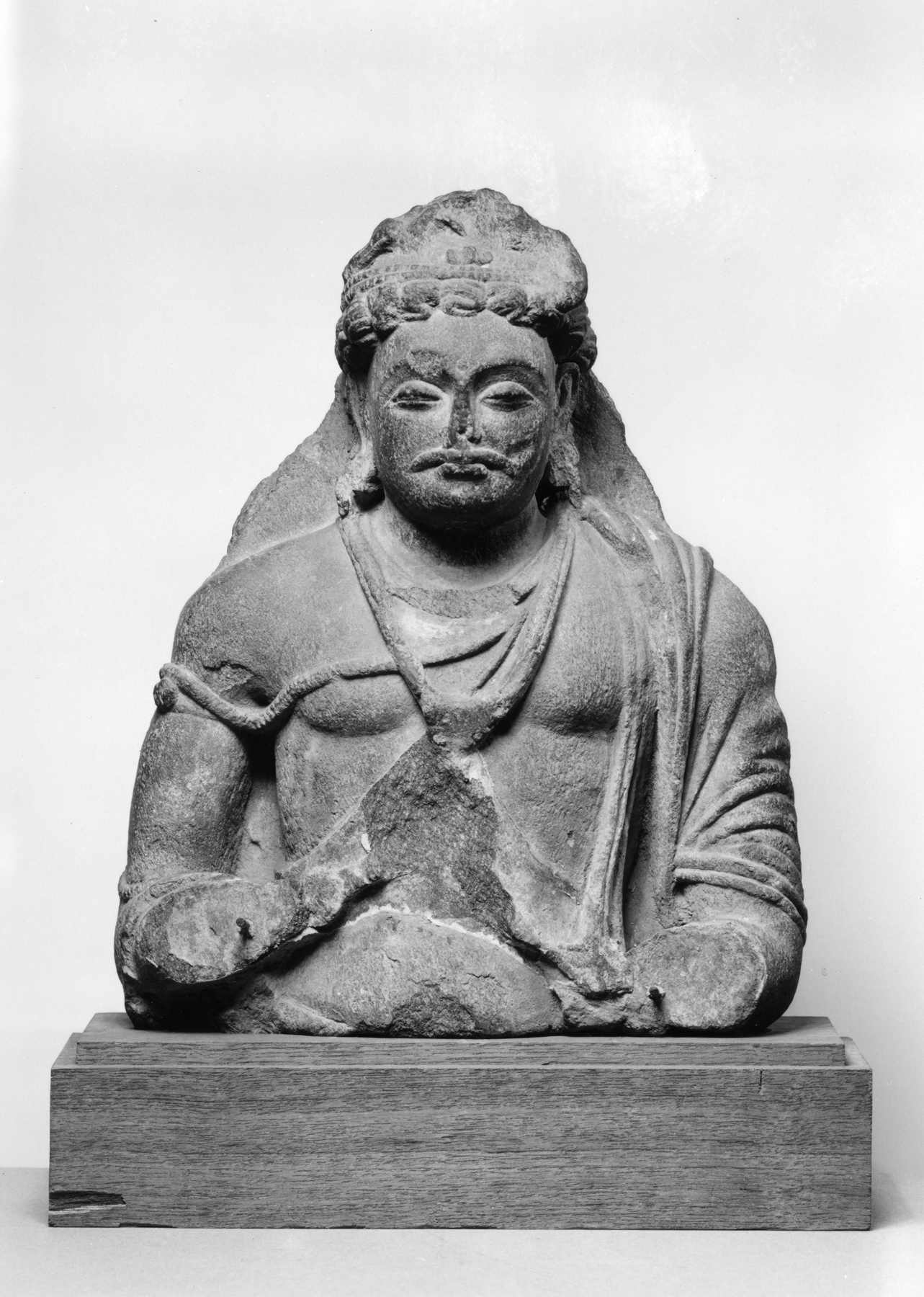Fragment of a Bodhisattva
This stone fragment depicts a Bodhisattva (a being who has a reached the stage where enlightenment may be achieved but has chosen to remain within the setting of society as a teacher to others) with eyes closed facing the viewer. Upon his head rests a diadem with an imbedded object attached in the central position. The latter appears to represent three florets or medallions, perhaps referencing the Triratna. From the figure’s neck hangs a piece of jewelry, its components occluded by the loss of material approaching the figure’s sternum. From the Bodhisattva’s chest, a jewelry band extends itself towards the right arm, wrapping around the upper arm section. The figure’s left arm is draped in fabric and both hands have been lost. Metal rods protruding from the former site of the forearms indicate that they were once attached with fortifying rods.
Provenance
Provenance (from the French provenir, 'to come from/forth') is the chronology of the ownership, custody, or location of a historical object. Learn more about provenance at the Walters.
Baroness Helen Giskra, Baltimore [date and mode of acquisition unknown]; Walters Art Museum, 1949, by gift.
Geographies
India, Matva (Place of Origin)
Measurements
H: 14 1/2 in. (36.8 cm)
Credit Line
Gift of the Baroness Helen Giskra, 1949
Location in Museum
Not on view
Accession Number
In libraries, galleries, museums, and archives, an accession number is a unique identifier assigned to each object in the collection.
In libraries, galleries, museums, and archives, an accession number is a unique identifier assigned to each object in the collection.
25.33


